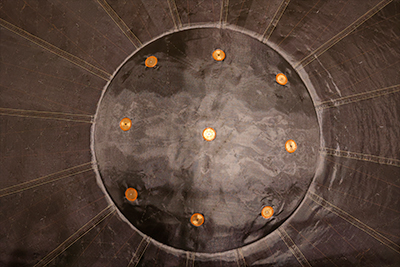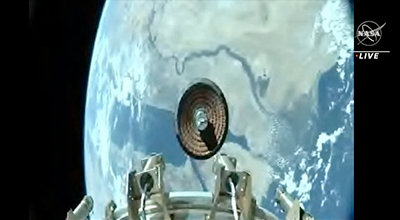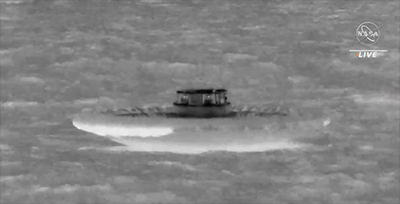 Space News space history and artifacts articles Messages space history discussion forums Sightings worldwide astronaut appearances Resources selected space history documents |
If you have previously registered, but forgotten your password, click here.
Traversing through an atmosphere to land on another world or return to Earth from orbit takes a spacecraft to extreme speeds, generating a tremendous amount of heat due to both the convection of hot gas flowing around the spacecraft and the radiation created by the shockwave that forms. The spacecraft must withstand changes in pressure, heat rate, temperature, and more. The instruments on board must be able to account for all these shifting variables. The instrument suite for LOFTID is comprehensive. Pressure sensors and strap loadcell pins will characterize the total force felt by the spacecraft. Total heat flux gauges measure energy transfer, capturing detailed readings across the body of the craft. A radiometer will measure the spacecraft's exposure to radiation as a result of the gas ionization induced by the hypersonic shockwave. One hundred thermocouples will monitor temperatures all across the vehicle. LOFTID will also use a parachute to break its fall into the Pacific Ocean and an "up look" camera installed at the top of the vehicle will capture launch vehicle separation and monitor parachute deployment for later review by the research team. LOFTID's instrumentation was developed through the partnership and expertise of multiple NASA centers across the country in addition to NASA Ames, including Langley Research Center, Marshall Spaceflight Center, and Armstrong Flight Research Center. These include GPS systems, experimental temperature sensors, specialized cameras, and more. The mission team designed a tailored package of instruments to collect ample data on LOFTID's perilous journey, but they also needed to make sure the sensors would survive the trip themselves. Testing and Calibrating for Extreme Temperatures  Above: This view of LOFTID's nose shows the re-entry vehicle's radiometer (center) and four total heat flux gages (top, right, bottom, left) that will be used to measure the radiative component of the heat flux and the overall heat rate, respectively. Each of these sensors also includes a port that allows pressure transducers to measure the aerodynamic pressure on the vehicle's surface. (NASA/Greg Swanson) The LOFTID spacecraft is designed to withstand the dangerous journey through Earth's atmosphere from low-Earth orbit, and the instruments on board have to be equally resilient. Researchers at Ames took the lead on testing and calibrating LOFTID's instruments and found two concerns that were addressed prior to launch. One was related to the radiometers and total heat flux gauges, which measure radiation and energy transfer. During testing, the Ames Sensors and TPS Advanced Research (STAR) Laboratories conducted calibration that indicated discrepancies in sensor readings and successfully re-calibrated the instruments with improved techniques for more accurate readings. A second fix was related to the materials used for the 100 thermocouple sensors across the spacecraft. Early tests found that thermocouples in several key locations in LOFTID's original configuration might not perform properly in expected flight environments. Using a tube furnace facility at Ames, a new configuration was developed. The performance of this new configuration was verified at conditions that replicate atmospheric re-entry via testing at the Boeing Large Core Arc Tunnel facility in St. Louis. This testing ensured the sensors could safely and accurately collect data on the trip. "Bringing anything through an atmosphere from space is difficult, especially at this scale and on worlds like Mars, Titan, and Venus," said Cole Kazemba, LOFTID aeroshell instrumentation lead at Ames. "But by doing what LOFTID's doing now – collecting data, testing on the ground and then in flight, learning and scaling up – NASA is making sure that, when we're ready, we'll be able to safely land on our destinations near and far." | ||||||||
| Robert Pearlman | NASA updates during the LOFTID deploy and descent: LOFTID Technology Demonstration Begins | |||||||


